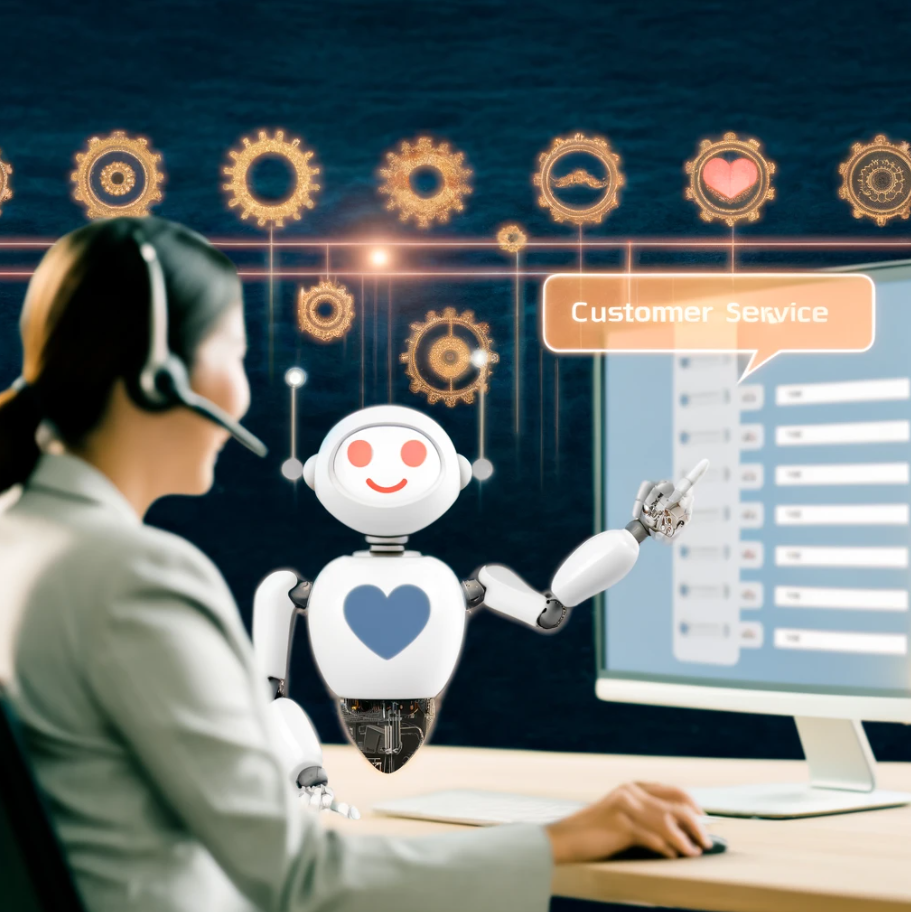AI for Customer Service – The Other Stuff to Consider
TL;DR
When adding AI like ChatGPT to customer service, it's not just about the benefits. We have to:
Check that AI gives right answers and doesn't mess up.
Remember AI can't handle deep talks or real feelings like people do.
Be patient and realistic about what AI can do right now.
Think about jobs and make sure AI helps people, not replaces them.
Work out the techy stuff to make AI fit with the systems companies already have.
Figure out the technical details to integrate AI with existing company systems
The Other Stuff about AI
In the realm of customer service, Artificial Intelligence (AI), particularly tools like ChatGPT, has stepped into the spotlight, promising enhanced efficiency and a new level of personalized care. With its ability to provide quick responses and improve the customer service representative’s own knowledge, AI has been touted as a game-changer. It ensures that repetitive questions never weary human patience and customer interactions remain fresh and focused. Moreover, the appeal of a 24/7 operational service is undeniable. AI's promise of constant availability is a beacon of reliability in the ever-demanding marketplace.
However, these advances bring challenges and other stuff to consider. While AI brings a wealth of advantages to the table, the challenges it presents are important to address.
Perhaps you are the owner and only see the potential productivity and profits. But I’d remind you that your choice will impact your family, your children, your children’s children, your neighbors, your community.
So take some time to think about the “other stuff” and we’ll be able to build a better solution.
Ensuring Accurate Responses: A primary concern with AI is its tendency to occasionally provide incorrect or irrelevant information—a phenomenon sometimes referred to as "hallucination." Regular monitoring and fine-tuning are required to maintain the reliability of AI responses, which is a continuous effort. Businesses must check and adjust AI regularly to make sure it's accurate.
Managing Depth of Service: AI excels at dealing with straightforward queries, but its ability to handle complex, nuanced interactions is still developing. While a customer may receive quick answers to common questions, the difficult and complex will necessitate a live agent's involvement. The challenge is to make sure AI and humans work together smoothly, so customers get help without frustration. And remember we don’t like the automated call systems that say Press 1 to repeat this menu; so why would we ever feel good about a ChatBot answering a complex question over and over again with a simple but incomplete answer!!!
Balancing Expectations with Reality: As with any emerging technology, there's a gap between expectation and reality. The initial enthusiasm for AI's potential must be tempered with patience and pragmatism. It's critical to recognize that while AI can significantly improve certain aspects of customer service, it may not always deliver the transformative impact anticipated in every area, at least not immediately. In other words, we're eager for a perfect future but getting there means learning from our mistakes as we go.
Ethical Considerations in Employment: The ethical implications of AI are profound. For instance, when IBM cut jobs after bringing in AI, it sparked discussions on the need to think about how we use AI responsibly. See “IBM is slashing jobs in marketing and communications” Companies must navigate these waters carefully, considering the long-term impacts alongside immediate benefits.
Technical Compatibility and Integration: One of the most significant hurdles in AI adoption is technical integration. The variety of systems and APIs in use across different companies means that AI solutions cannot be one-size-fits-all. Instead, they require customization and significant backend development to ensure compatibility with existing infrastructures. This is not only a matter of technological capability but also of strategic alignment and resource allocation.
To address these challenges effectively, a well considered strategy is essential. This strategy should encompass continuous learning and development, wherein AI systems are regularly updated and improved based on real-world performance and feedback. It should prioritize the human element, ensuring that AI serves to augment human interaction, not replace it. Moreover, a careful evaluation of AI's impact on employment should be undertaken, with strategies in place to reskill and transition affected employees where necessary.
As for technical integration, a partnership approach may be the most beneficial. Collaboration with AI developers and service providers can facilitate smoother integration into existing systems. This may involve leveraging middleware platforms or developing custom APIs that act as bridges between AI solutions and corporate databases and software.
Businesses must also remain vigilant about the security and privacy concerns that come with integrating advanced AI into their service networks. Ensuring that customer data is handled with the utmost care and that AI systems are impenetrable to cyber threats is paramount.
The journey toward fully realizing the potential of AI in customer service is ongoing. As we advance, it is crucial to keep the discourse open, not just among tech enthusiasts and business leaders but with the broader public, whose lives and livelihoods are increasingly intertwined with AI's evolving role. We're navigating a landscape where the human touch remains irreplaceable, and where AI, for all its prowess, is but a tool to enhance, not overshadow, the value of human connection.
In wrapping up, embracing AI in customer service is more than just keeping up with trends—it's about thoughtfully applying technology where it can make a real difference. It's about understanding its boundaries, leveraging its strengths, and most importantly, ensuring it benefits those it's designed to serve. Our focus must remain on fostering a balance where AI enhances human connections rather than replaces them. By moving forward with a mindful and strategic approach, we're not just optimizing our service—we're investing in our future’s future.


